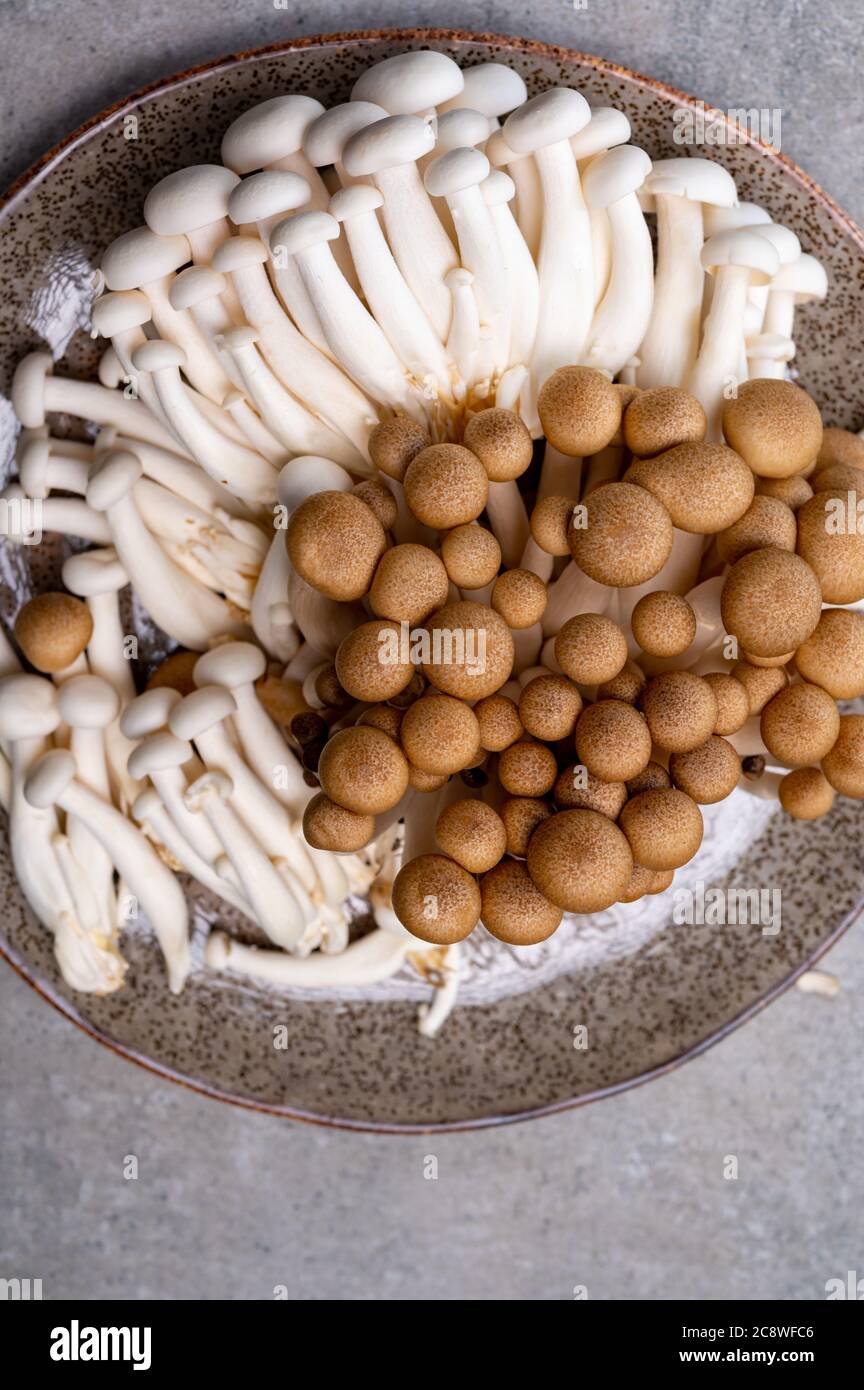The buna shimeji mushroom is known as the brown beech or brown clamshell mushroom, whereas the bunapi shimeji is called the white beech or white clamshell mushroom. They are also found growing in northern Europe where they are referred to as pioppino mushrooms.
- White Buna Shimeji Granite
- White Bunashimeji Mushroom
- White Buna Shimeji Mushrooms
- Grzyby White Buna Shimeji
- White Buna Shimeji Quartz
Northern California is experiencing major heatwave in these past few days. The temperature exceeds 38 Celsius (100 Fahrenheit) for 3 days now, and I have no mood to stand in the kitchen. With that in mind, I will share this really quick and delicious stir fry with you, butter garlic soy sauce shimeji stir fry.
Shimeji (beech mushroom) and other ingredients for this stir-fry
Shimeji is actually not just one mushroom, but a group of edible mushrooms native to East Asia. Like most mushrooms, shimeji is rich in guanylic acid, glutamic acid, and aspartic acid, basically components that make shimeji mushrooms full of umami flavors.
Two varieties of shimeji that are commonly sold in the US are buna shimeji/brown beech/brown clamshell mushroom and bunapi shimeji/white beech/white clamshell mushroom.
If you have never tried shimeji before, you are missing out, and I think they look super cute too :) If you can get both the brown and the white varieties, I think using both varieties lends the dish a pretty color combo presentation.
To prepare shimeji, trim off the root part (like enoki if you ever tried that). Then, tear off individual mushroom stalks so they don’t all bunch up together. If you see any dirt, just wipe them off with a wet kitchen town since it’s always better not to submerge mushrooms in water.
Aside from shimeji, you will also need unsalted butter, garlic, soy sauce, salt, ground white pepper, and scallion.
5 Minutes Stir Fry
Once your prep work is done, the dish should be ready in no time.
Heat butter in a frying pan over medium-high heat. Once the butter melts, add shimeji to the pan and cook for 2 minutes.
Add garlic into the pan, mix well and cook for 30 seconds.
Add soy sauce, salt, and ground white pepper. Once the sauce is dry, turn off the heat and transfer to a serving plate.
Serve the shimeji stir fry immediately garnished with thinly sliced scallion.
Voila! You have a quick and delicious shimeji mushroom dish. If you want, you can pair this with a plate of pasta too for a quick weekday meal.
Surprisingly High in
Vitamin D, Dietary Fiber and Niacin
VS
In comparison to white mushroom, Hokto’s kinoko contain vitamin D, vitamin B12, dietary fiber, niacin, and potassium for every 100gs of mushroom, making them highly nutritious.
Nutritional Comparison of Kinoko
Vitamin D
3.75
1.3
2.6
0.4
Bunapi
Maitake

Dietary Fiber
2.5

0
2.7
1
Bunapi
Maitake
Vitamin B1
0.075
0.12
0.06
0.08
Bunapi
Maitake
Vitamin B3 / Niacin
3
0.7
5.4
3.6
Bunapi
Maitake
Potassium
White Buna Shimeji Granite
250
White Bunashimeji Mushroom
404

243
318
Bunapi
Maitake
Other Nutrients
White Buna Shimeji Mushrooms
Bunapi | Maikake | ||
| Carbohydrate | 6 g | 7 g | 3.26 g |
| Cholesterol | 0 mg | 0 mg | |
| Calories | 36 kcal | 39 kcal | 22 kcal |
| Fiber | 1 g | 3 g | |
| Vitamin B2 | 0.17 mg | 0.21 mg | 0.4 mg |
| Ergothioneine | 2.2 mg | 3.1mg | |
| Beta Glucan | 2.5 g | 2.4 g | |
| Manganese | 14 ppm | 5 ppm | |
| Iron | 7.6% | 4.6% | 0.5 mg |
| Copper | 9 ppm | 28 ppm | |
| Boron | 52 ppm | 41 ppm | |
| Zinc | 54 ppm | 83 ppm | 0.52 mg |
The difference in Farming and Production Practices
Generally, mushroom farming involves composting with manures and then hand picking the mushroom.
No Manure, No Hand, No Contamination
Grzyby White Buna Shimeji
Hokto mushrooms are grown on cultures derived from natural ingredients. A streamlined automation process will pick, measure and package the mushrooms. We keep contact with the mushrooms to a minimum with few exceptions. Grown in a clean environment, Hokto mushrooms are highly recognized for its good hygiene, high quality, and long shelf life.